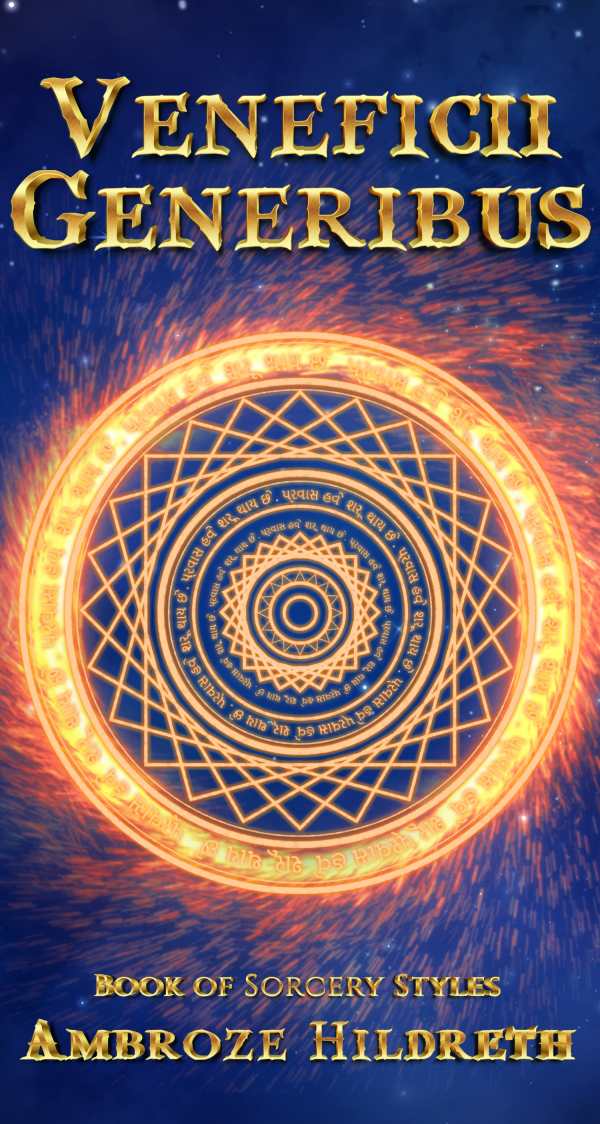Veneficii Generibus
Book of Sorcery Styles
Designed to facilitate one’s own way of doing sorcery, Veneficii Generibus is an intriguing, if esoteric, spiritual guide.
Ambroze Hildreth’s spiritual guidebook Veneficii Generibus applies knowledge about corollary systems to the crafting of spells.
Central to this book is the argument that codes of truth reside in people, the galaxy, and each body in between. These rules, it says, can be depicted with lines, colors, and numbers in connections between points on geometric designs. It also states that the number of points in a “family” system, represented by a geometric shape, create unique axes. Its ultimate assertion is that accessing the world’s truth, which is contained in these designs, begins with meditation. With practice, it claims, such meditation can result in sorcery, which it introduces in terms of ninety-nine spells.
The book’s stated goal is to organize and facilitate finding one’s own way of doing sorcery. The geometric graphics at the book’s start, representing the four elements working together in physical and chemical bonds within and outside of body systems, convey key information toward this objective. The frayed corners of the sepia pages obstruct some of the printed words, though, while misspellings and grammatical errors prove distracting.
The chapters follow the same order of systems as the graphics. The information on which the spells are based builds steadily, though the book also reiterates some points that it considers crucial to understanding, as with the idea that energy is generated from, and does not exist apart from, matter. Beginning with tuning into the senses, it introduces meditation practices that teach self-control, which is used to channel memory and energy into spells. Next, electricity, water, space, and other fields are explored using sound and vibration exercises. Finally come lessons in dark magic requiring all of the previous knowledge.
Emphasizing order and self-control, the book prioritizes facts and truth over emotional reactions. However, some of its sorcery directions, as with those that begin with “just” and “simply,” strike a dismissive tone toward nonexperts. And the prose is often deadpan, jarring with the wide spiritual reach of the book’s guidance. Using “styles” in place of spells and defining sorcery in a unique way, as “the play with energies around you, created by outside sources,” it is esoteric to an often exclusive degree.
Further, illustrative graphics and illustrations stop appearing after the book’s introduction, creating gaps in understanding when it comes to some of the more complex concepts introduced. For example, the placement and movement of body parts in the spells’ directions is unclear, prohibiting their easy implementation. Further, some of the items required for the spells, including crystals, staffs, and chemicals, are underexplained, and advice to gain additional knowledge beyond the book’s scope is given without gestures to helpful resources. Inconsistencies also arise: While encouraging the acknowledgement of small and large systems as fractals of one truth, the book does not acknowledge its own sources and guides.
Veneficii Generibus is an intriguing introduction to magic that’s based on scientific principles.
Reviewed by
Mari Carlson
Disclosure: This article is not an endorsement, but a review. The publisher of this book provided free copies of the book and paid a small fee to have their book reviewed by a professional reviewer. Foreword Reviews and Clarion Reviews make no guarantee that the publisher will receive a positive review. Foreword Magazine, Inc. is disclosing this in accordance with the Federal Trade Commission’s 16 CFR, Part 255.

